I’ve been wanting to make Aleppo-inspired soap for some time now. My beautiful friend Shonna surprised me with some laurel berry oil so I made some!
From Wikipedia – “Aleppo soap (also known as savon d’Alep, laurel soap, Syrian soap, or ghar soap, the Syrian word for ‘laurel’) is a handmade, hard bar soap associated with the city of Aleppo, Syria. Aleppo soap is classified as a Castile soap as it is a hard soap made from olive oil and lye, from which it is distinguished by the inclusion of laurel oil.”
This is a pretty simple soap to make. You’ll need olive oil, laurel fruit (berry) oil, sodium hydroxide and water.
Don’t confuse laurel fruit (berry) oil with bay laurel essential oil (laurel leaf). They are completely different. Laurel berry oil is a base oil that saponifies. Bay laurel essential oil is just that…an essential oil. The laurel berry oil that I used is from BeScented.
Typically people use 20-30% laurel berry oil and the rest olive oil. In the recipe below, I use 20% laurel berry oil.
Aleppo soap is usually done using a hot process method. Check out some of these videos.
Isn’t that amazing!?
We’ll simply make a cold process soap, but you can hot process it as well. I would add more water if you plan to hot process.
This recipe is 32 oz. oils and fits into a Bramble Berry 10″ silicone loaf mold. I used the tall and skinny mold from Bramble Berry. I used a 5% superfat and discounted the water quite a bit. I used 1.5 times my lye in water.
I didn’t add any color or scent because I wanted to see how it comes out. The laurel berry oil has a wonderful pine scent. It came through a bit in the finished soap, but was very light.
SAFETY WARNING! If you’ve never made soap before, be sure to start with our basic soap making guide. This recipe and instructions are for experienced soap makers. Be sure to gear up in your goggles and gloves before you make soap.
Aleppo Soap Recipe (Laurel Soap Recipe)
- Olive Oil – 25.6 oz. (80%)
- Laurel Berry Oil – 6.4 oz. (20%)
- Water – 6.2 oz.
- Sodium Hydroxide – 4.15 oz.
Step 1: Make your lye solution. Weigh the water and lye into separate containers. Pour the lye into the water while stirring. Be sure to mix your lye solution in a well-ventilated area.
Step 2: Weigh out your laurel berry oil into the container that you’ll be mixing your soap in.
Step 3: Weigh the olive oil into the same container.
The laurel berry oil can have chunks of fruit in it. Use your stick blender to make sure it is 100% blended and pureed.
Step 4: Once your lye solution has cooled down to 130 degrees F or below, pour it into your oils and mix to trace.
Step 5: Once you reach trace, pour into your mold.
Step 6: Let your soap sit for 24 hours, unmold and cut your soap.
Step 7 – Cure your soap. Since this is a high-olive oil soap, you’ll want to give it a nice long cure. At minimum, cure for 6-8 weeks. A 6 month to 1 year cure is even better!
Happy Soaping!
Amanda Gail

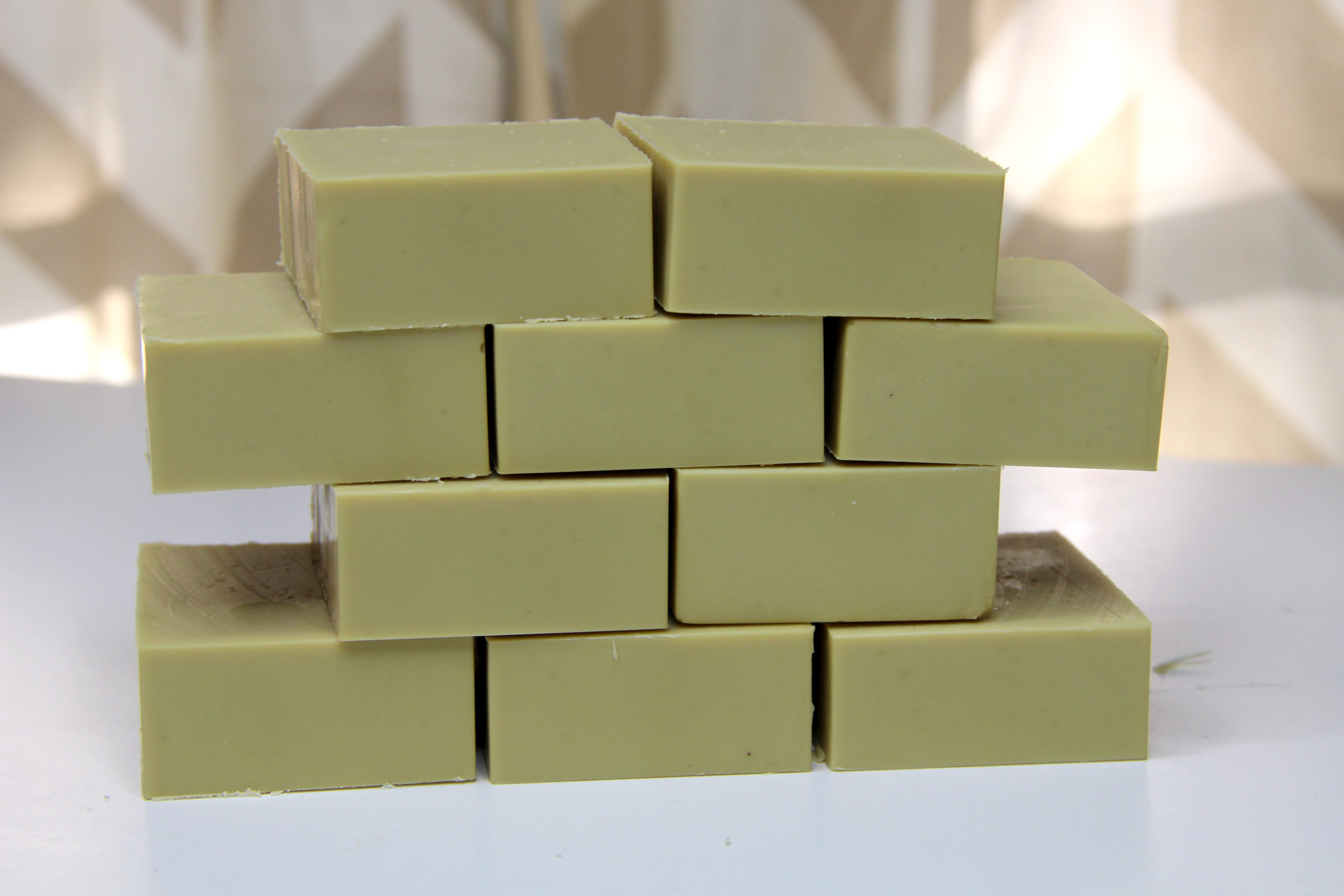
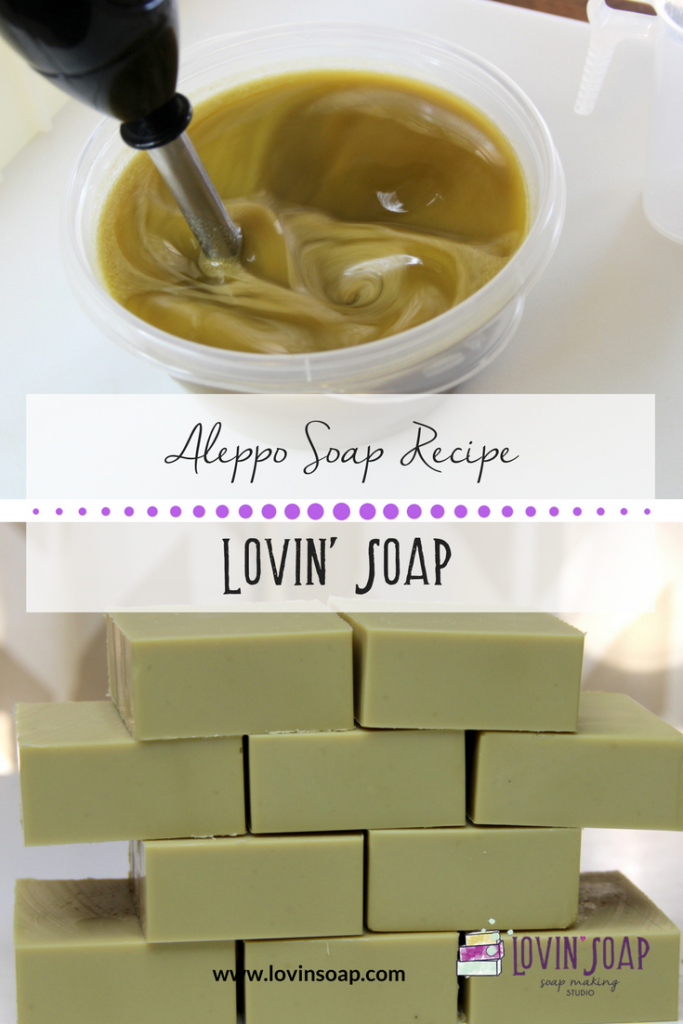
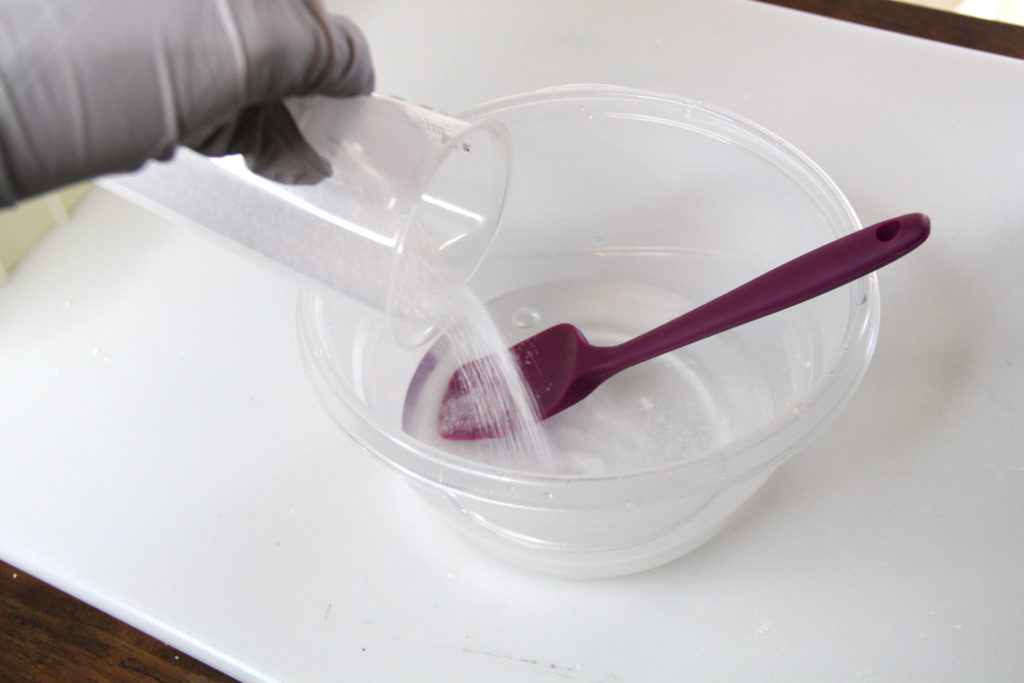
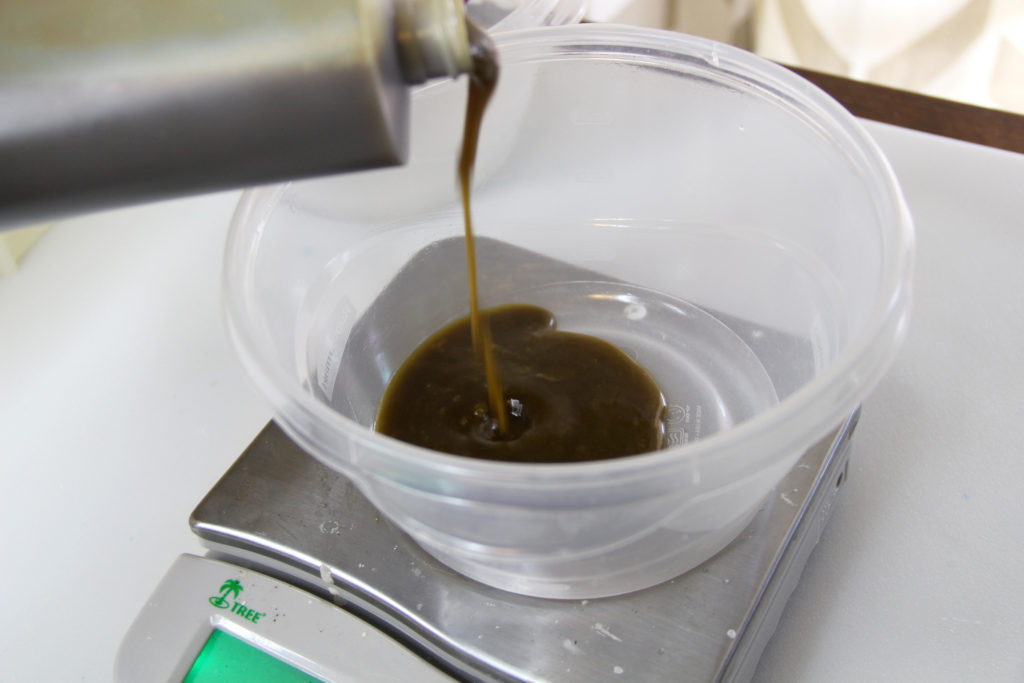
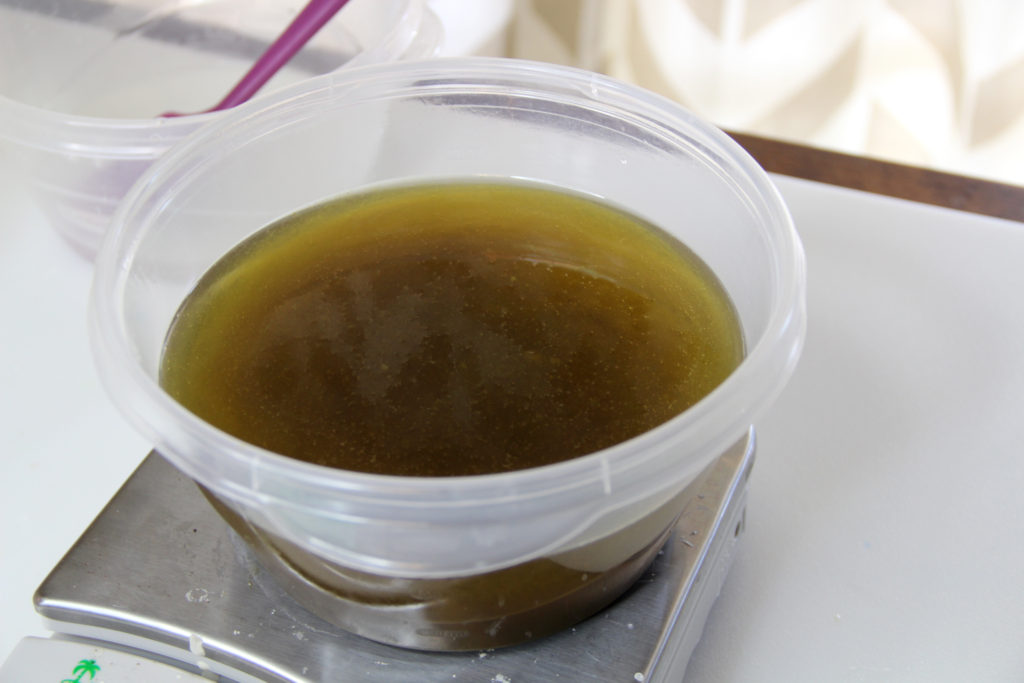
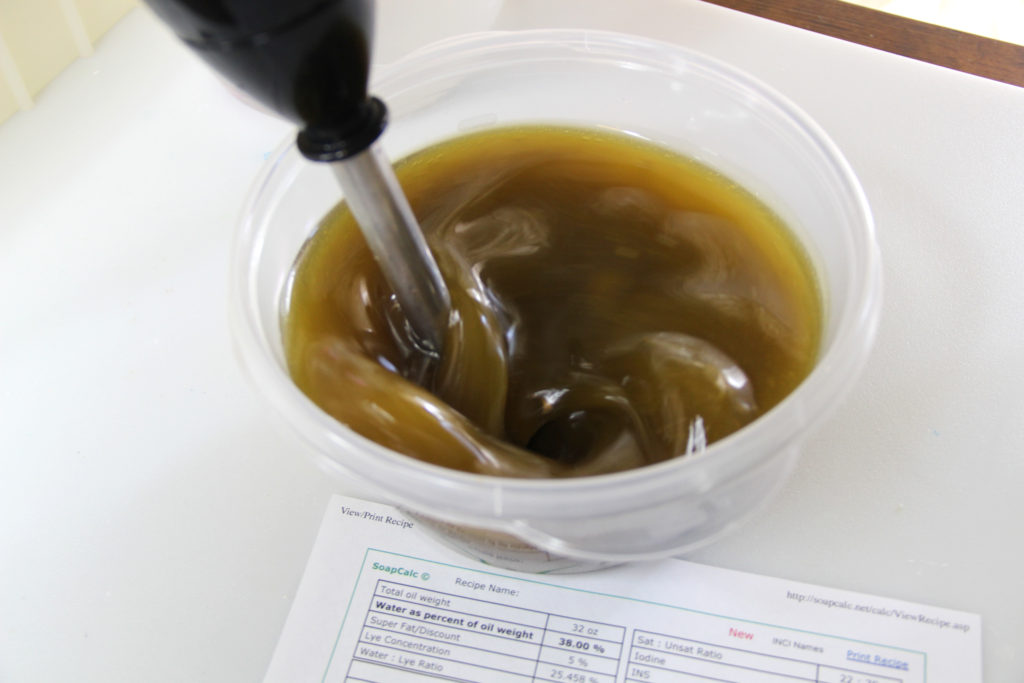
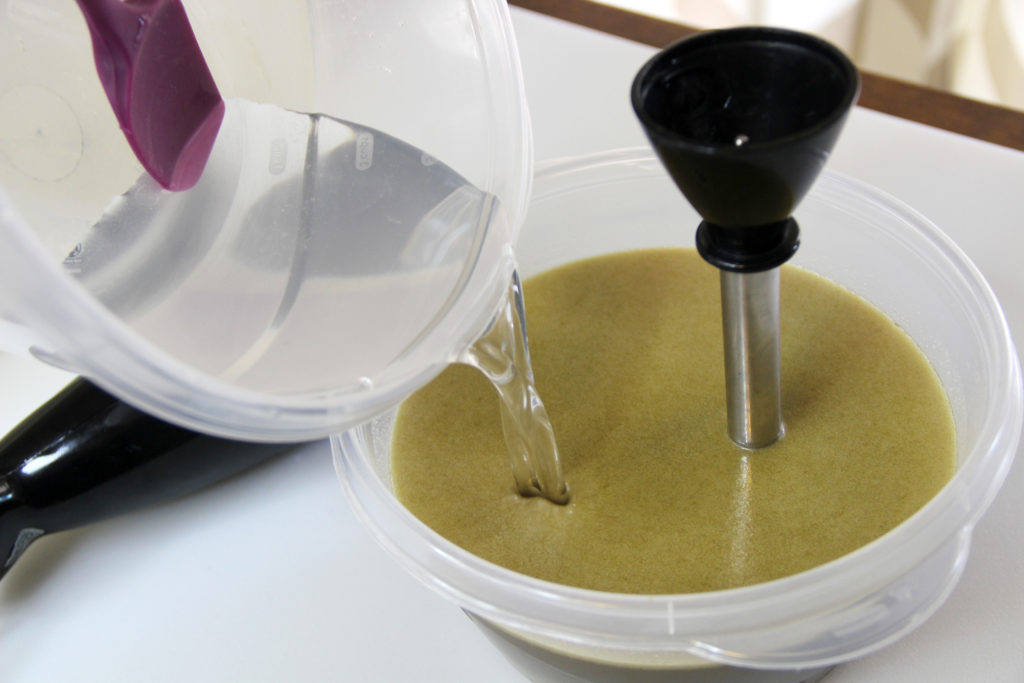
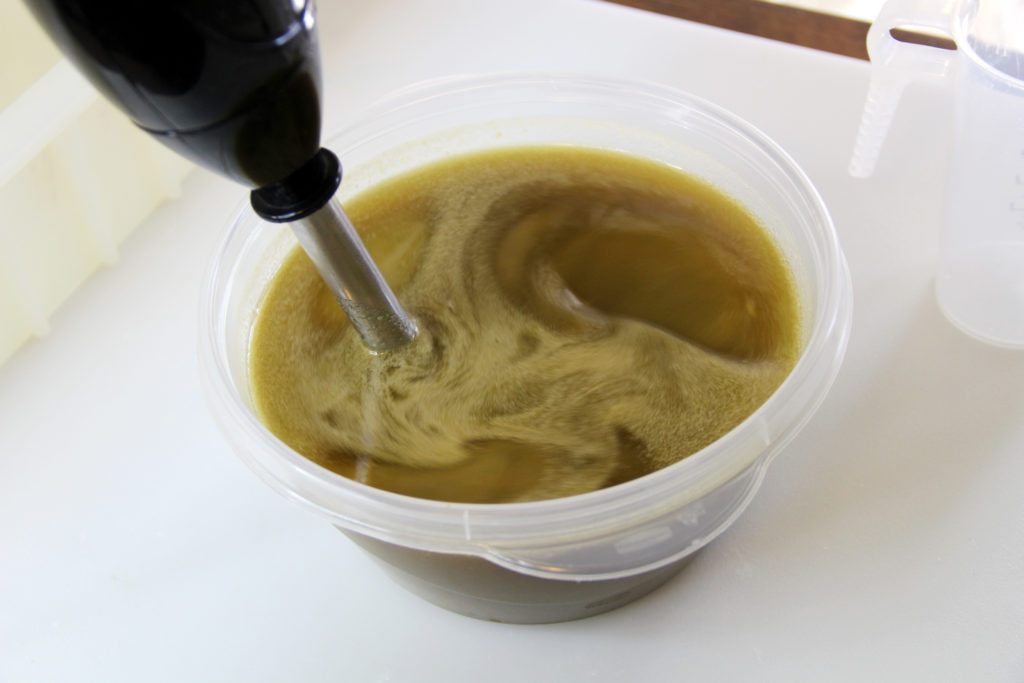
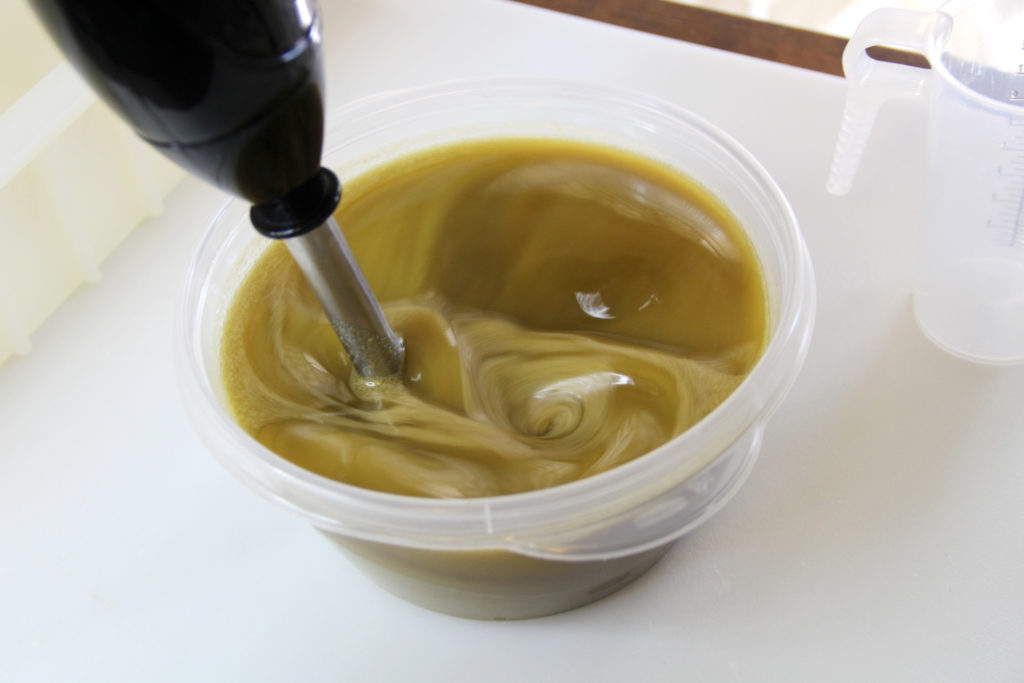
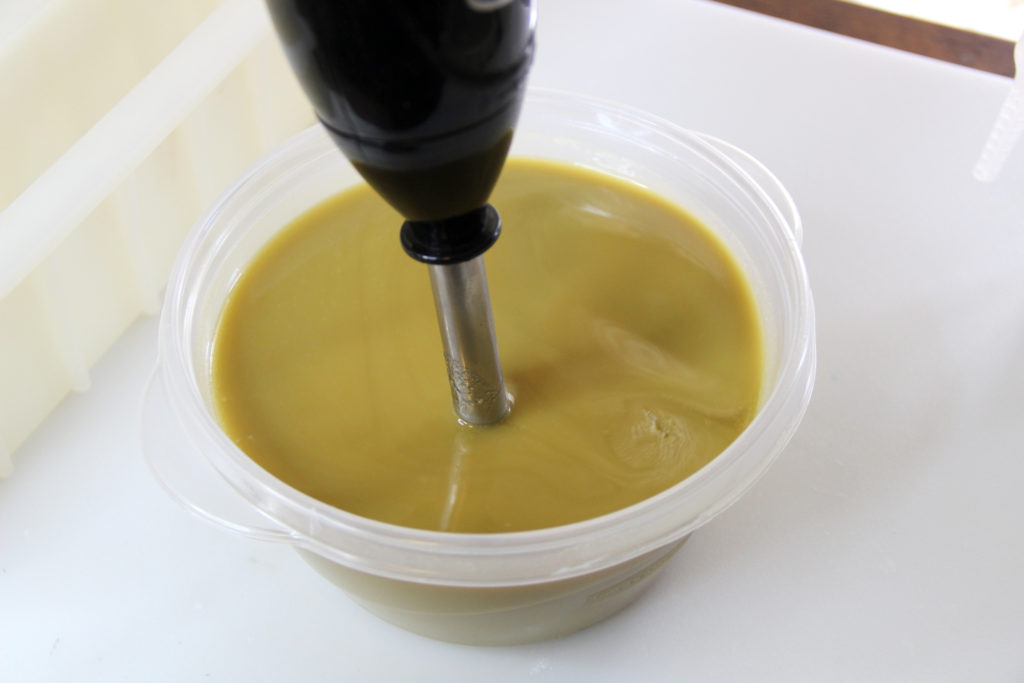
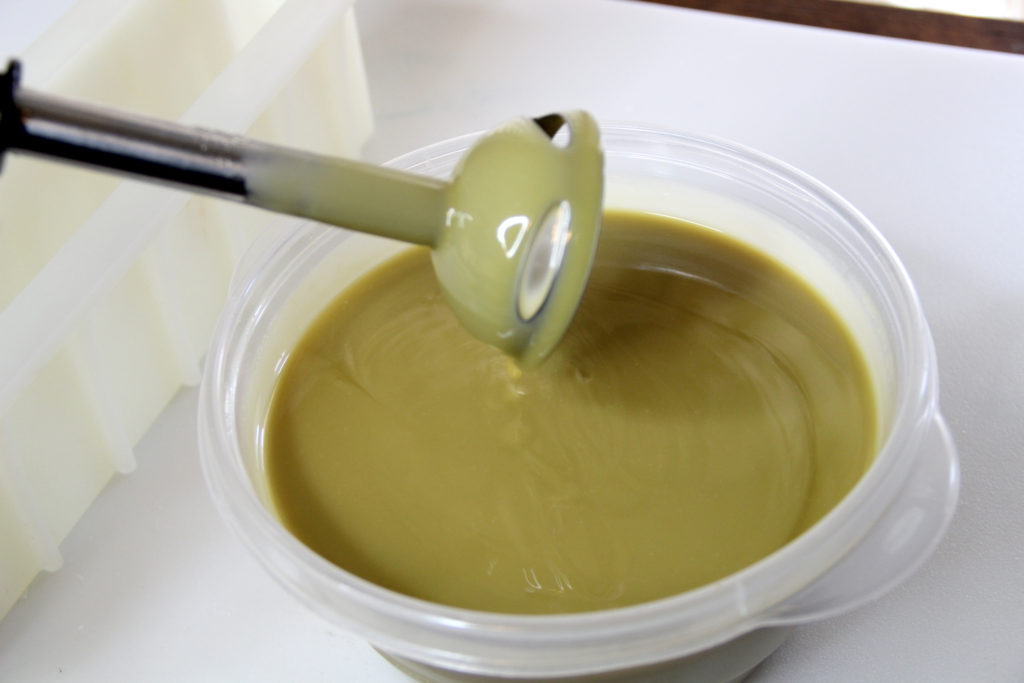
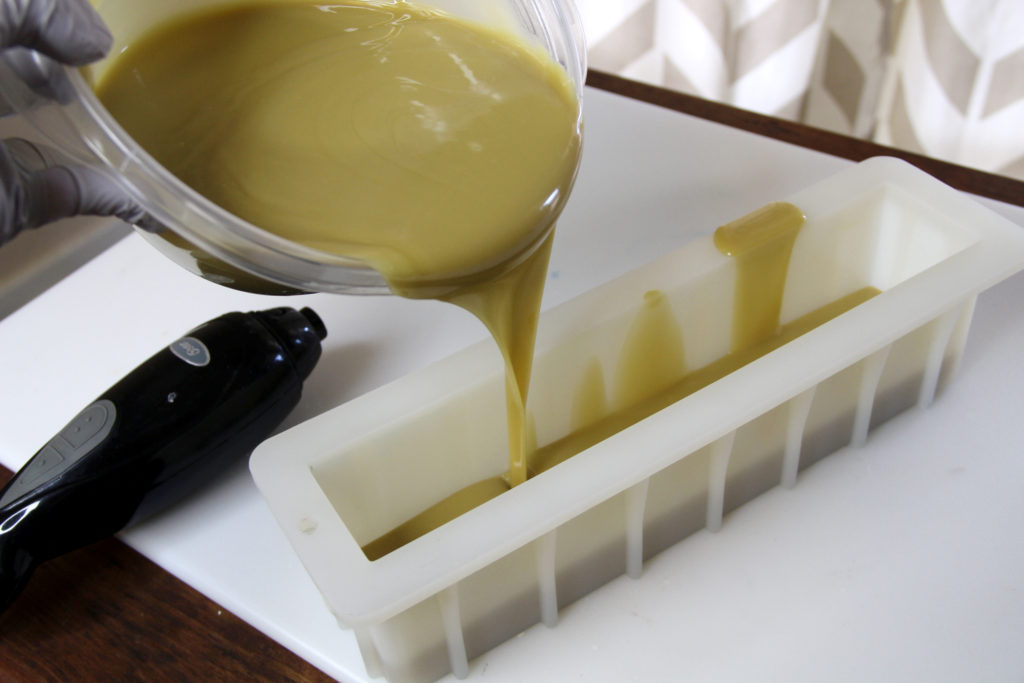
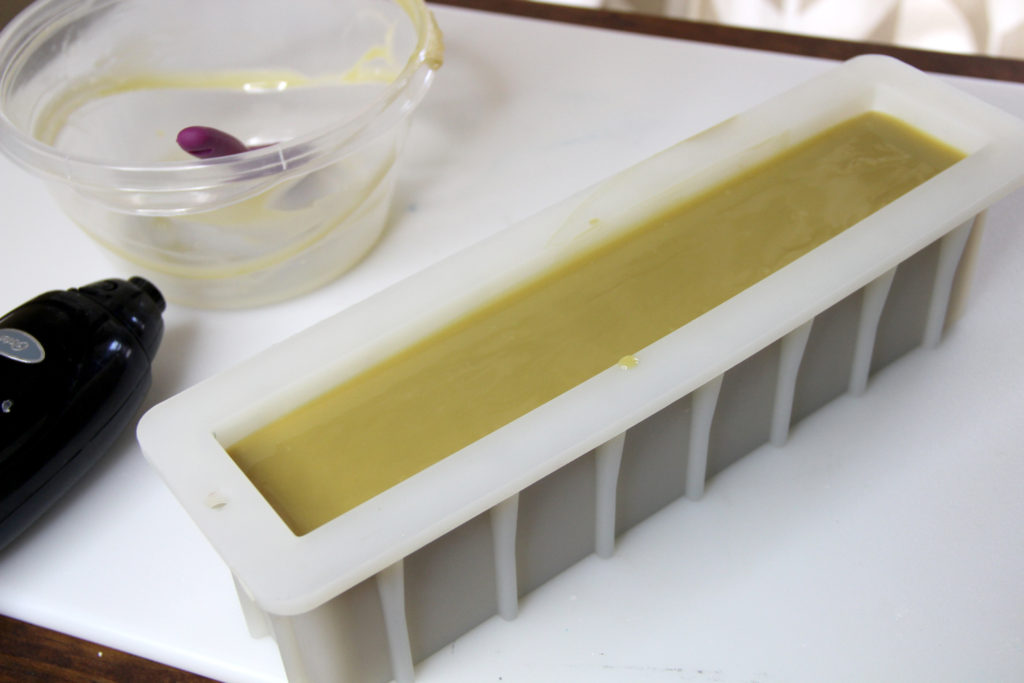
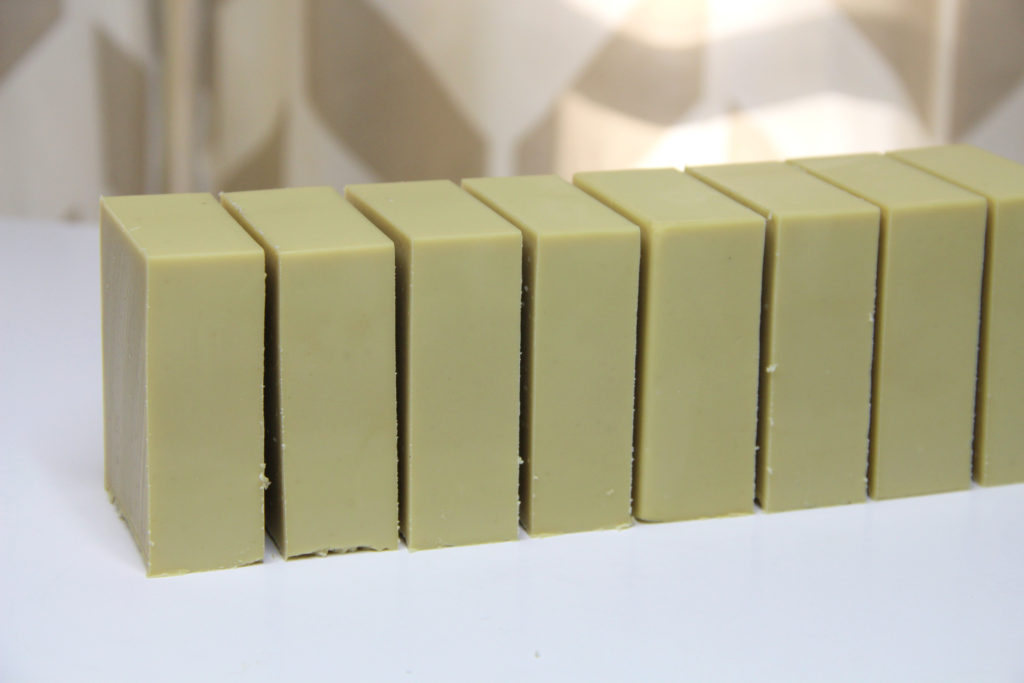
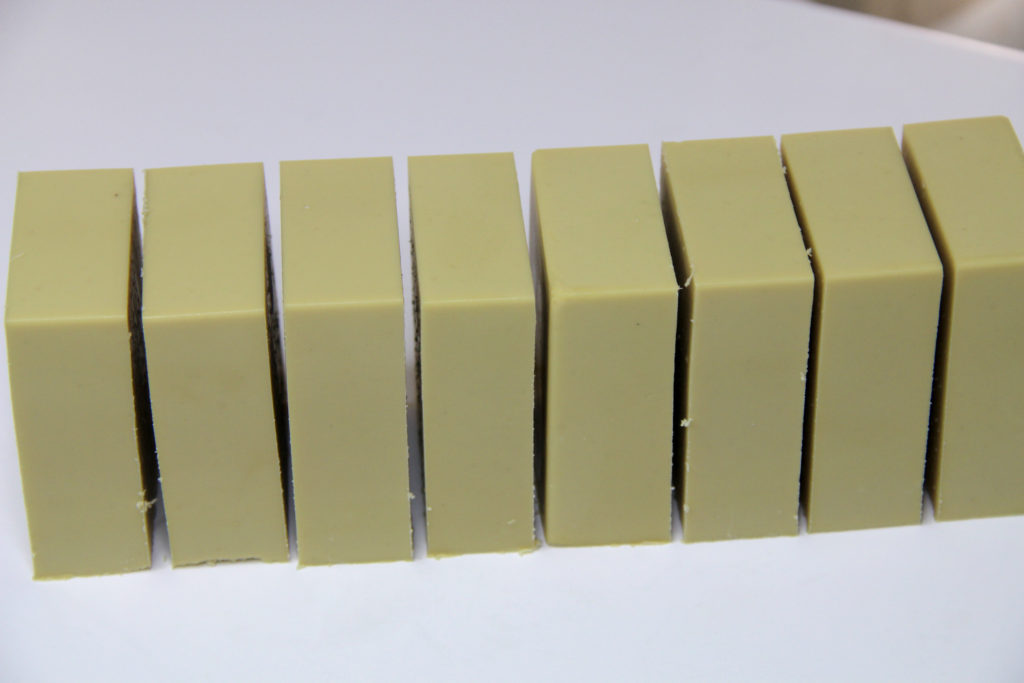
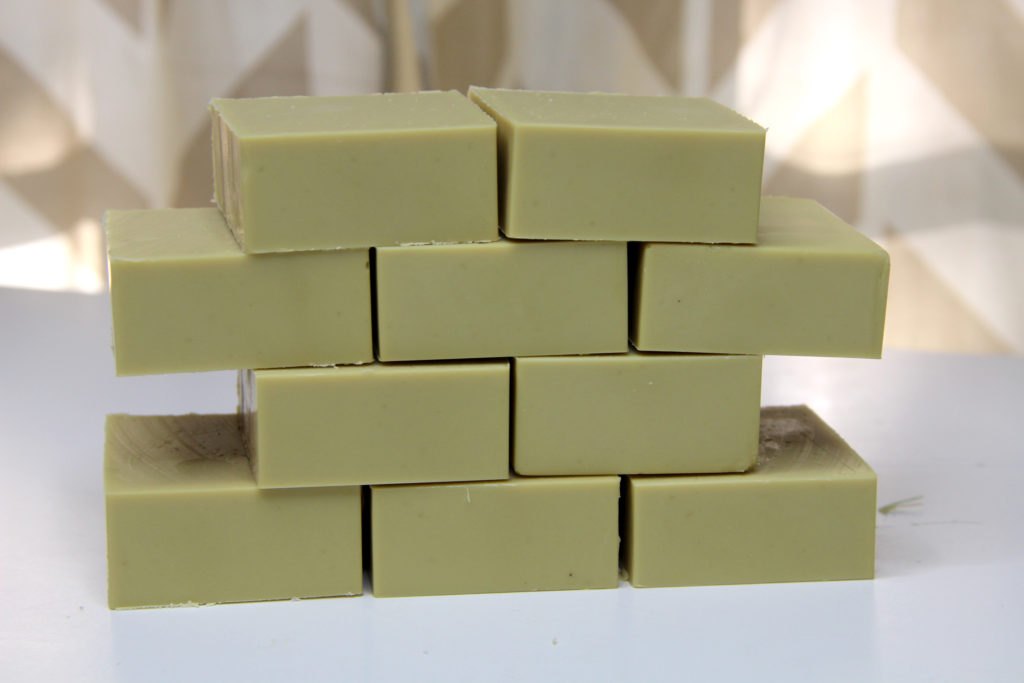

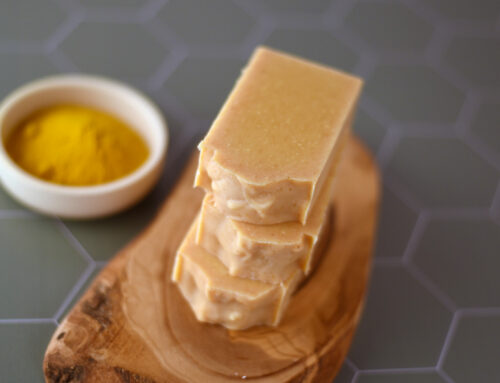
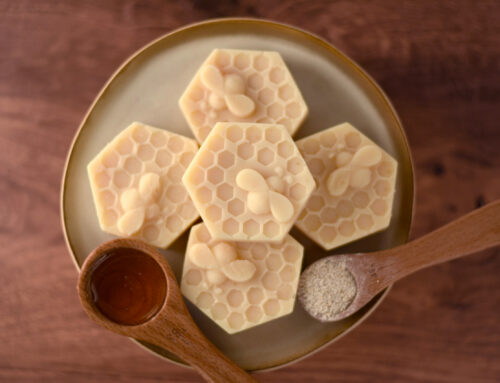
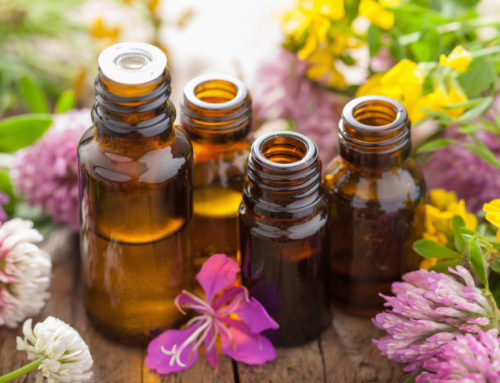

Please advise how to buy “laurel berry oil” in bulk? It is very expensive and most places sell 1 oz or less. Thank you so much!!!!! I loved this video.
I think you may have got it confused with laurel berry essential oil. This soap uses laurel fruit oil aka laurel berry oil which is a base oil. It is commonly sold in amounts greater than 1 oz. I recently bought 100 grams (~3.5 oz) for the equivalent of about $11US at a local supplier, but you can get it cheaper online. In the recipe above she mentions ordering it from Bescented and there are other suppliers as well.
try Bescented.com
Hi Amanda, i love your website. Your experience, knowledge and passion for soap are so inspiring. I’ve learned a great deal about very specific topics, thank you so much for sharing! The Aleppo soap tradition is super interesting, my highest respect for all the soap masters. Regards from Argentina!
Hello dear. I just need some help or guide line… Iwant to know that if i use glycerine soap base or goat milk soap base so is it already contain lye in it or not. Or i have to do a process for this kindly some 1 guide me i have to start my own start up.. Need prayers and guideline
Thank u
Hi Amanda, I tried the recipe and had the soaps cured for 4 months. Im using the soap, it does leave my skin somehow dry. I used the exact amounts in your recipe. Any suggestions?
Hi Amanda, I understand that the Sodium Hydroxide used is the “for analysis grade” . Am I correct?
I made my first batch of Laurel Berry Oil Soap- tweaked the recipe (a good bit) I added a little Babassu oil, Castor oil, Laurel Berry Oil (20%), Lard, Coconut Milk (50%) Olive Oil (infused with chamomile and calendula) and a blend of German Chamomile, Roman Chamomile, and Lavender EO. It actually smells great. I’m giving it a good 6 month cure. It already lathers well and feels amazing. Can’t wait to make more. Thank you for all your great advice!
I luv the smell of aleppo soap… it smells like a smoky camp fire to me. Your soaps are a lovely shade of green… have they turned tan yet? If it’s not too much trouble, could you please post a pic when they do? And note the date? TIA
Thank u for your article
What are the benefits of this particular soap that you have found? Just curious. Waiting on my Laurel Berry oil to ship out soon 😉
I have to say I love this soap already. I made it last night and cut it this morning. It came out beautifully. I appreciate the history behind true Aleppo soap, and I do realize that this is not exactly the same, but I feel like it is a little piece of history anyway. I found the scent of the oil out of the bottle a bit like Neem, and thick like Neem as well, but I have to say it smells really fresh and… I don’t know, different this morning. I used a sliver right away as I do with every soap I make, and I love the scent it left on my skin. Thank you for posting this.
Did it trace very fast? We usu add more water like 3 times o slow down the rrace. Why did u have to cut diwn the water?
Hello for all, I am a master soapmaker of Aleppo Soap.
i would like to precise that Aleppo soap not only a recipe. It is ancestral know-how transmitted from one generation to another.
We can not call the soap you made with your recipe “Aleppo soap”.
Aleppo soap is cooked in hot water for 2 days, then spread on the ground and after cutting and stamping, rests in the open air for 9 months (drying period).
Riad,
I’m honored to meet you. I first learned about the city of Aleppo many years ago from a documentary film I saw about the ancient tradition of soap making there. It is tragic to hear about the war and destruction happening in your city. Where are you now and are you still making soap? I had heard that one master soapmaker from Aleppo is now making soap in France.
You are right, this is not the traditional method for making your soap, which is very labor intensive, ancient art. I am not that experienced, so I will try this cold process method – using olive oil and the laurel berry oil – and will be sure to let people know that, while it contains some traditional ingredients, it is a simple representation, made to honor the “real thing” from Syria. I will offer this soap for sale and all proceeds will go to the Syrian American Medical Society, to aid Syrian war refuges https://www.sams-usa.net/. I will be sure to educate my customers about the history, tradition and different method used to make real Aleppo soap.
Jill
Hello Riad,
I have watched a video of soapmakers in Aleppo many times on YouTube. Can you tell us, with the current political situation in Aleppo, are any soapmakers left there in the city?
Thank you.
its still Aleppo soap man. We don’t have time to cook the soap and let i cure for 9 months, This is an inspired recipe, basically we do the same thing, we just don’t cook it as long.. We use it at a minim of 6 weeks, I know we don’t do as you do it in your country BUT its our way of making it. I’ve made 3 batches myself, I’m letting it cure for 6 weeks and using it myself. I want to let some cure for 9 months to see if it turns brown like I see on the website….
Can I double this recipe? Including the lye and water? Thanks.
Tried this tonight, doubled the batch in a slab mold. Not used to this much water discount, but made sense, traced nicely. I would describe the scent as a deep, somewhat smokey forest! Already made a resin stamp with a hand carved laurel design and soap name. Now the waiting game!!!! Thank you.
If I want to double this recipe, can I double everything, including lye and water? Thanks so much.
Looking forward to making this recipe!!!!
Did you insulate your soap? Did your soap gel?
I would like to try this! Can I use an essential oil with this recipe, If so what would you recommend?
Never heard of laurel oil. Very interesting new recipe. Thanks for the post.
amazon has it, Ive bought two orders already…..
Amanda you said above you unmolded in 24 hours. I guess I would have thought it would have been very soft? Thanks so much for sharing! Looks a beautiful soap.
Love the colour
Hello!
I just want to ask you, when I checked your Allepo recepie in Soap calculator, I saw that the quality of this soap is very low?(Hardnes range from 29-54, in this recepie only 22….ect?
Best regards Natasa
How long did you stick blended it? Did they thickened up fast? Some said that they hand mixed it for 15mins and reached thick trace.
thanks! I recently “discovered” some “Aleppo soap” that I had hidden from myself. It gets lighter and mellows out a lot. I love it. The city of Aleppo falling to ISIS inspired my soaping journey….
Did you heat up your oils?
No I didn’t. I just used them room temp. I did have my lye hotter than normal at 130 degrees F.
What’s it smell like? I’ve never heard of it but sounds awesome.
It smells like pine, but very faint. I might have given you a bar in that soap I gave you! If not, I’m sure we have more somewhere. It does need to cure for a bit. 🙂